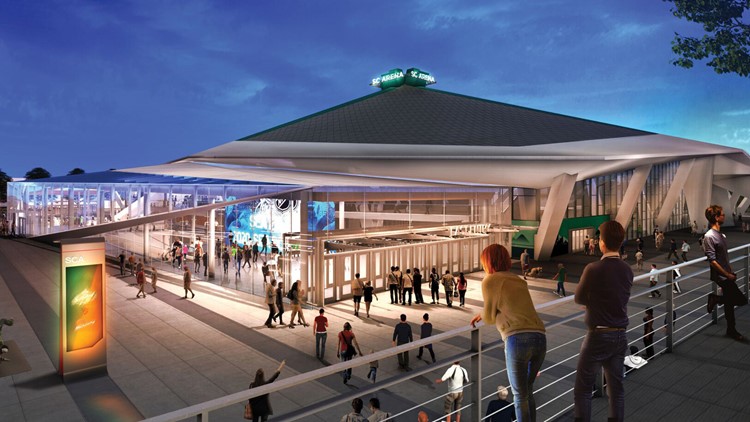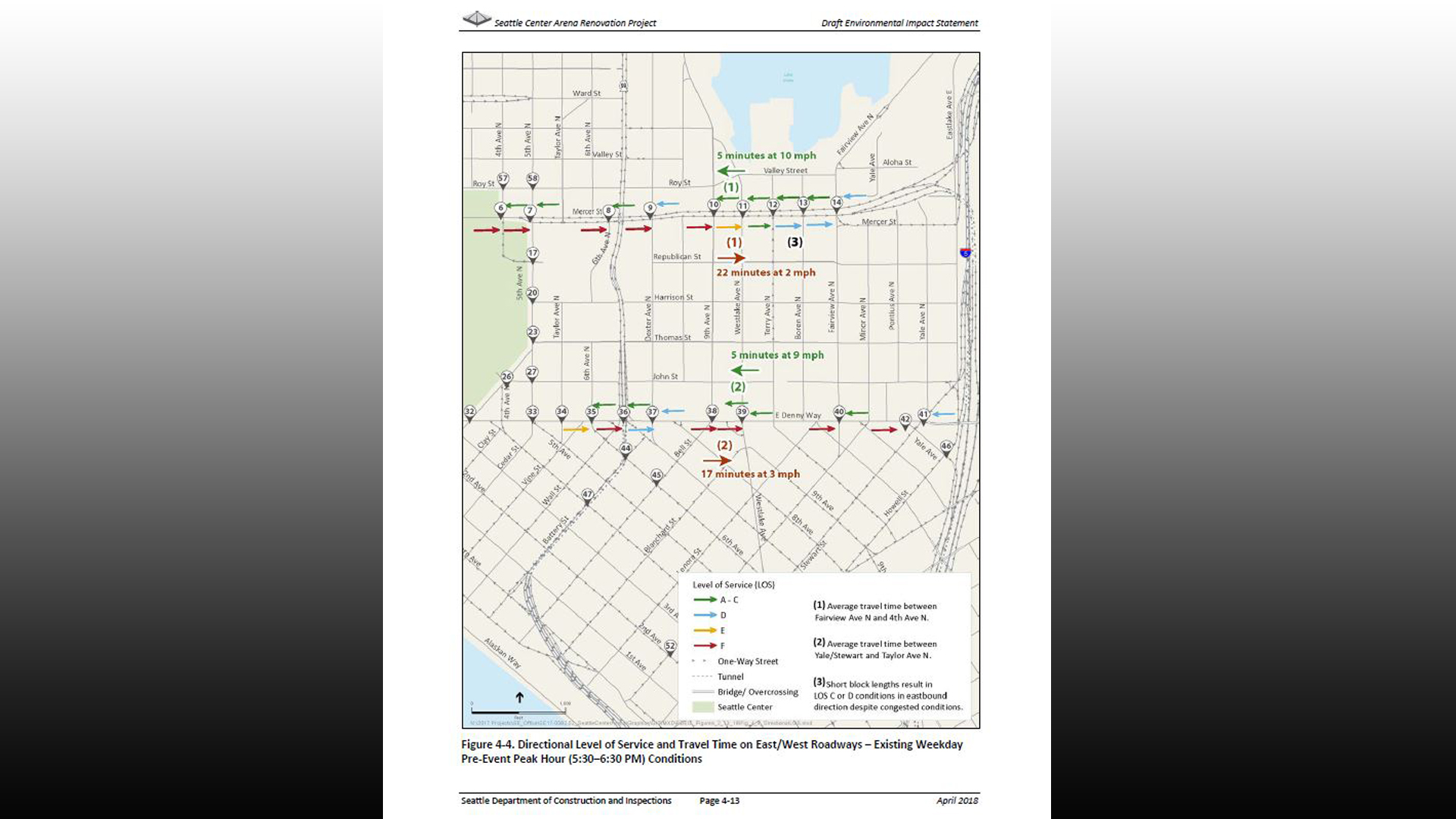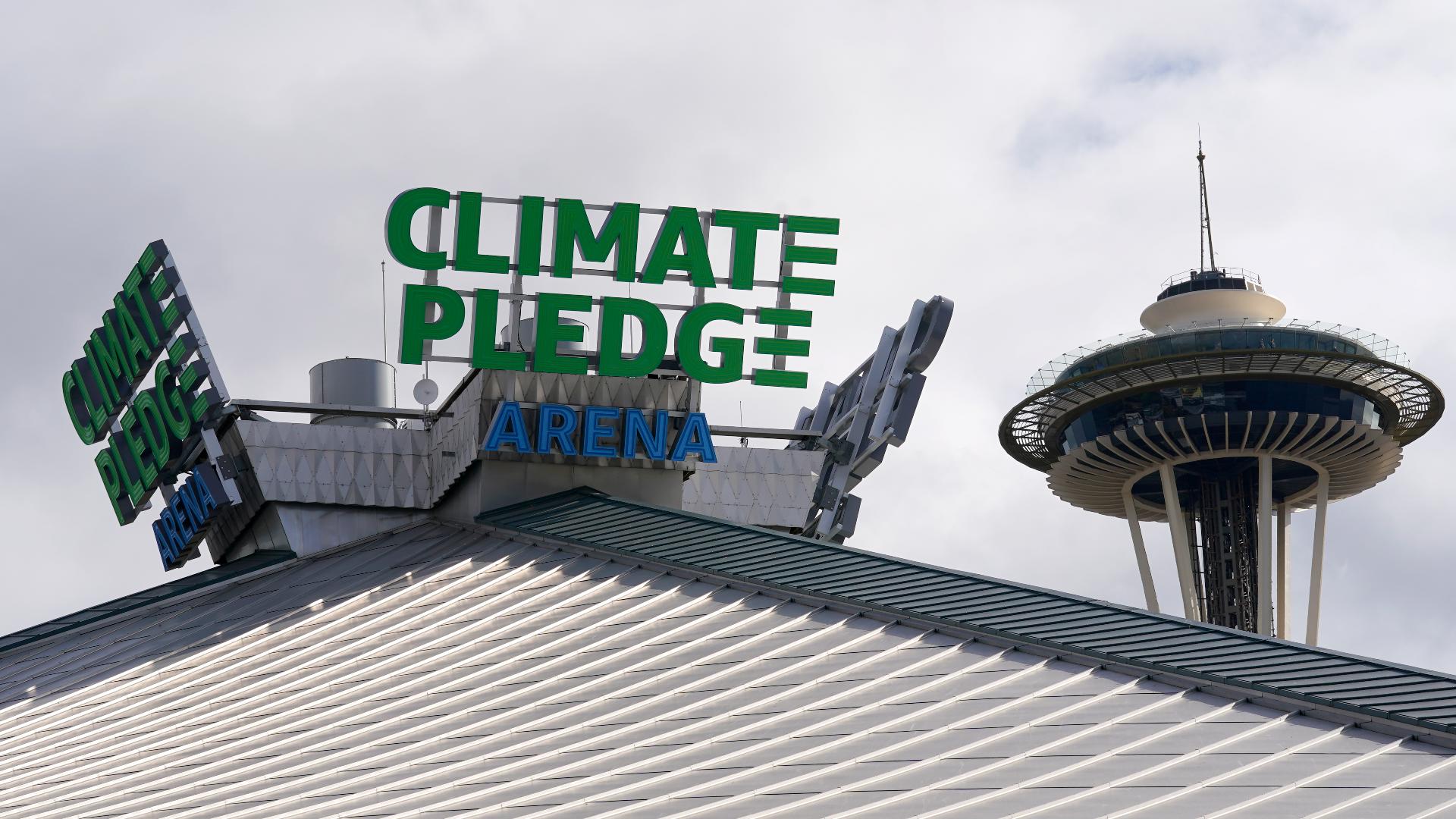Should the new Seattle Center Arena have a "woonerf?"
That's just one of the suggestions in a lengthy, more than 600-page Environmental Impact Statement (EIS) released by the City of Seattle's Department of Construction and Inspections on Monday. The document also sheds new light on the Oak View Group's (OVG) plans, and transportation issues in the area around the construction site.
But, first, about that woonerf. It's a concept which has been discussed in Seattle before. A woonerf, which means "living street" in Dutch, makes the roadway primarily for bicyclists and pedestrians rather than motorists. Speed is limited to walking speed, and the space is often used to socialize and engage with community.
In the document, it's suggested as an alternative for Thomas Street on the south side of the existing KeyArena site.
OVG has suggested closing Thomas Street, between 1st Avenue N. and Warren Avenue N., during game days to serve as "a street with a raised street-bed where pedestrians and bicyclists have priority over motorists." It is not listed as a priority for the project, but would instead feed into the grand new arena atrium entrance on the south side.
That part of the Seattle Center site would be the most disrupted by the planned 24-month construction of the new arena. The draft EIS states that construction is currently slated for October of 2018 through October of 2020 if the Master Use Permit is issued. That would include nearly two months of demolition to begin later this year. The EIS states that nothing is being booked at the arena during that span.
The project also relays OVG's plans for the overall size and use of the building. The document claims that the arena will have 750,000 of interior square footage -- more than doubling the current KeyArena footprint -- and host 242 to 257 events a year.
The bowl will be 15 feet deeper than the current KeyArena configuration. The roof will be preserved, and according to the EIS, "On March 8, 2018, the property was listed on the Washington Heritage Register and recommended eligible for listing in the National Register of Historic Places by the Washington State Advisory Council on Historic Preservation. This recommendation has been submitted to the National Park Service for approval."
There would also be a new underground garage built to house 450 cars, complimenting the 650 stalls which were built for KeyArena in the mid-1990s
But there will be significant noise impacts, according to the EIS. Piledrivers are expected to cause disruptions for radio station KEXP, for instance, and trees will be uprooted. But according to the document OVG has pledged to replace the trees on a 2-to-1 ratio.
The report also takes a deep dive on transportation, and will likely be a source of contention before issuing of any final documents. The EIS writers note "Cumulative impacts result from the incremental consequences of a project when added to reasonably foreseeable future actions. The cumulative effects may be undetectable when viewed individually, but when added to impacts from other projects may cause measurable environmental impacts." But, a study found that westbound traffic, in particular, was smooth during potential pre-game weeknights hours, and weekends. Eastbound traffic, particularly along Mercer Street and Denny Way, is bad now and projected to be troublesome in the future. The Department of Construction and Inspection notes that OVG has pledged $40 million long-term to solving the riddle.
The EIS also says construction will force OVG and it's contractors to disassemble, store, and reassemble the historic Bressi Garage on the southwest side of the construction site.
The EIS also says the WNBA's Seattle Storm will likely relocate to Alaska Airlines Arena at UW, the Tacoma Dome, or the arenas in Kent or Everett. However, it notes that Seattle University is not likely to return to Seattle Center. Buried on page 226, the report notes, "The Seattle Center Arena would provide an upgraded facility for existing recreational events such as concerts and the Seattle Storm. The Seattle University Men’s Basketball Team would not return to the Seattle Center Arena following construction but would likely play in the Connolly Center."
The EIS process is being closely monitored by National Hockey League leaders and the NHL Seattle group. The league could make a decision later this year on whether to formally award an NHL expansion franchise to the city to play in the new arena. The group has already sold more than 30,000 season ticket deposits, including 10,000 in the first 12 minutes of the sale earlier this year.
Monday's document release triggers a 45-day public review, including a public meeting on May 14 at 6:30 p.m. at the Seattle Center Armory. DCI Spokesman Bryan Stevens says a final environmental impact statement would then be issued near the end of summer.
Then the Master Use Permit could be issued, and construction could begin, with or without the Woonerf.





